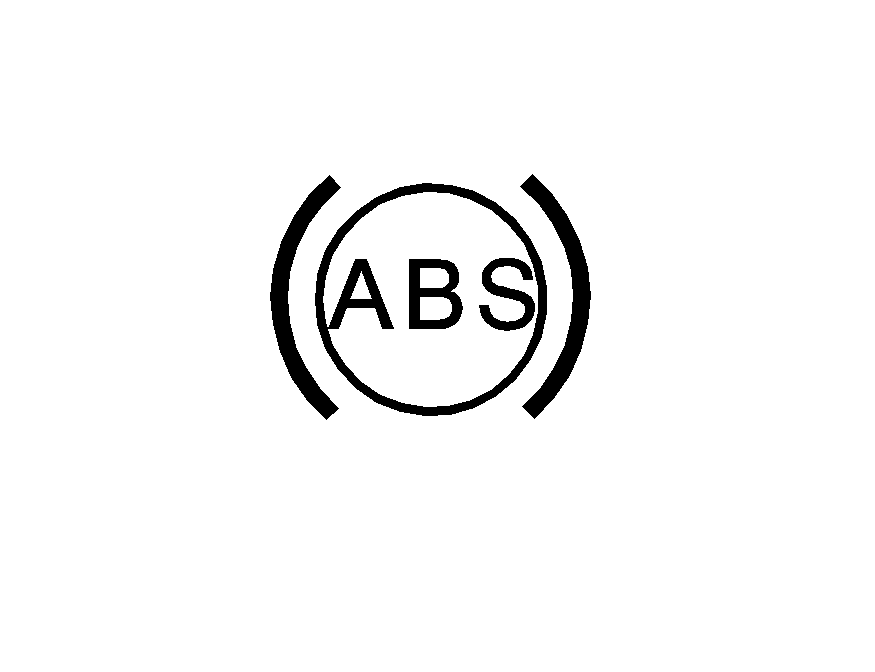
Your vehicle may have anti-lock brakes (ABS). ABS is an advanced electronic braking system that will help allow you to steer during hard braking situations.
If your vehicle has anti-lock brakes, this warning light on the instrument panel will come on briefly when you start your vehicle, then go out.
If it stays on, or comes on while you are driving and not applying the brakes, you may have a problem with your anti-lock brake system. See the Index under Antilock Brake System (ABS) Warning Light .
Your anti-lock brake system (ABS) has a two-part system check: When you start your engine, or when you begin to drive away, your anti-lock brake system will check itself. You may hear a momentary motor or clicking noise while this test is going on, and you may even notice that your brake pedal moves or pulses a little. This is normal.
Here's how your anti-lock brake system (ABS) works. Let's say the road is wet. You're driving safely. Suddenly an animal jumps out in front of you.
You slam on the brakes. Here's what happens with ABS.
A computer senses that wheels are slowing down. If one of the wheels is about to stop rolling, the computer will separately work the brakes at each wheel.
The anti-lock system can change the brake pressure faster than any driver could. The computer is programmed to make the most of available tire and road conditions.
As you brake, your computer keeps receiving updates on wheel speed and controls braking pressure accordingly.
Remember: Anti-lock does not change the time you need to get your foot up to the brake pedal or always decrease stopping distance. If you get too close to the vehicle in front of you, you will not have time to apply your brakes if that vehicle suddenly slows or stops. Always leave enough room up ahead to stop, even though you have anti-lock brakes.
Using Anti-Lock
Do not pump the brakes. Just hold the brake pedal down firmly and let anti-lock work for you. You may feel a slight brake pedal pulsation or notice some noise, but this is normal.
